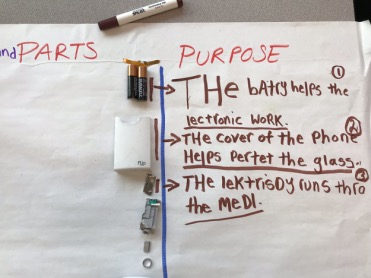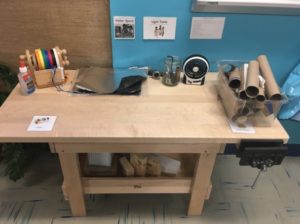Building A School Community with Project Zero
This blog post comes from Cynthia Robinson-Rivers, the principal of Van Ness Elementary School in Southeast DC and a member of The PD Collaborative’s Advisory Council. Her school was recently awarded the Standing Ovation Award for Excellence in School Innovation. She wrote this blog piece for us to share some of the hard work and planning that ultimately led to that distinction, and the vision for an inclusive, student-centered school community that continues to drive her team at Van Ness.

Van Ness Elementary School, in the Navy Yard neighborhood on the SE waterfront, was reopened in August 2015 after having been closed for almost a decade. With a completely renovated building, an entirely new teaching staff, and a student population that started with early childhood and would grow by a grade level each year until 5th grade, Van Ness was well-poised to be able to establish an inclusive school community where all students can achieve at the highest levels. While there were a number of initiatives we knew we wanted to take on that initial year, we first prioritized Conscious Discipline: a school-wide approach to behavior that emphasizes teaching socio-emotional skills and self-regulation; modeling appropriate behavior rather than punishing children; and cultivating intrinsic motivation for students to do the right thing and treat others in their “school family” with compassion.
With our first year of focusing on these structures and engaging in a year-long book study under our belt, for our second year (2016-2017), we branched out to some of the approaches we believe are important components of a strong academic program. I’d spent the previous two summers as a fellow and faculty member at Harvard’s Project Zero (PZ) and enthusiastically signed up all the Van Ness teachers to participate in the Washington International School Summer Institute for Teachers (WISSIT) in August 2016, so that they could learn about PZ ideas and prepare to share that learning with students during the school year.


After an invigorating week of professional learning at WISSIT, Van Ness teachers spent the 2016-2017 school year applying the concepts of visible learning, documentation, and thinking routines that they learned. We’ve focused on using natural, authentic, diverse materials in the classroom; using a variety of meaningful ways to document students’ thinking and learning; and shifting our classroom language, such that we are noticing and naming the thinking skills we want to reinforce. The impact on our children is already apparent: our more serene room environments have a calming effect that improved student engagement in lessons. Projects are also more engaging with the use of materials that are contextualized and meaningful. Families have been able to extend learning as they’ve been able to access the content of our units of study through the carefully curated and displayed student work available in our school environment.


What Project Zero ideas are next for us? This year we are engaging in deep learning about creative problem solving and maker-centered learning. Edward Clapp from PZ’s Agency by Design has facilitated professional learning with our teachers. In addition, a small group of teacher leaders visited maker schools across the country to find out how to develop, staff, and resource a makerspace for our library and ‘mini maker spaces’ for each of our classrooms. We understand that our students need to be able to approach challenges using critical and creative thinking in order to be successful in school and in life. Our plans for “making” experiences aim to cultivate these skills while also making school simply more fun and engaging for our energetic young learners.